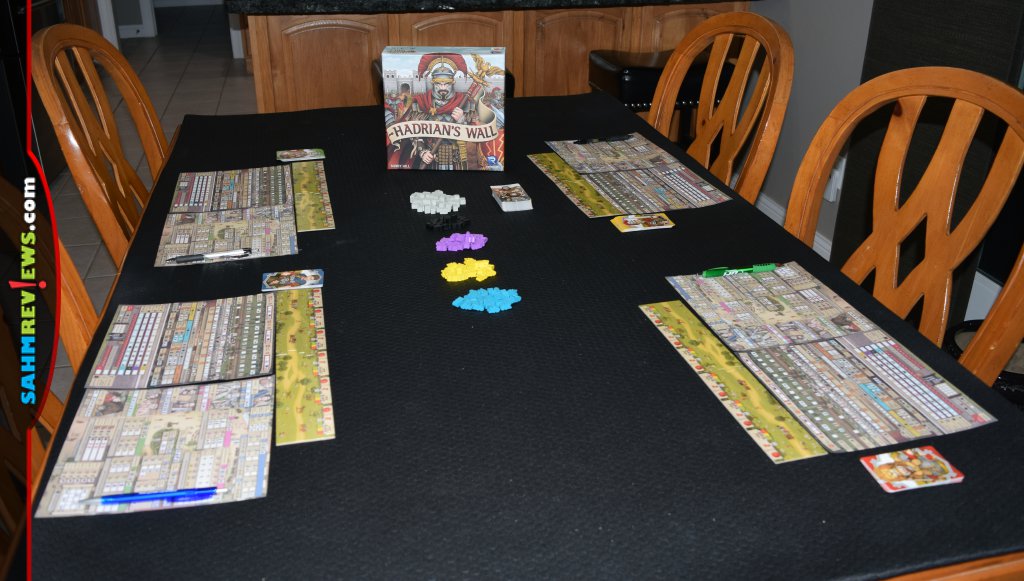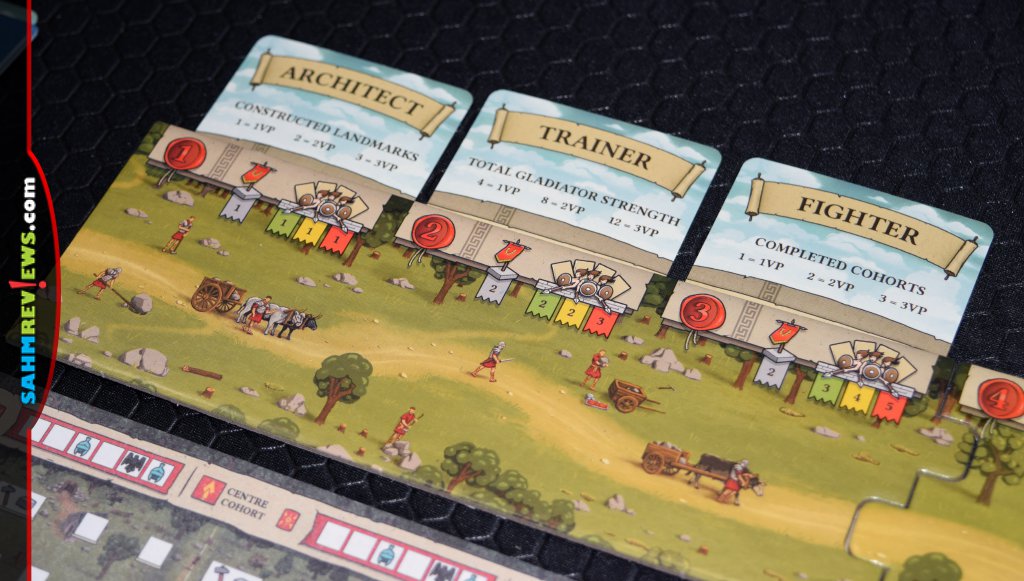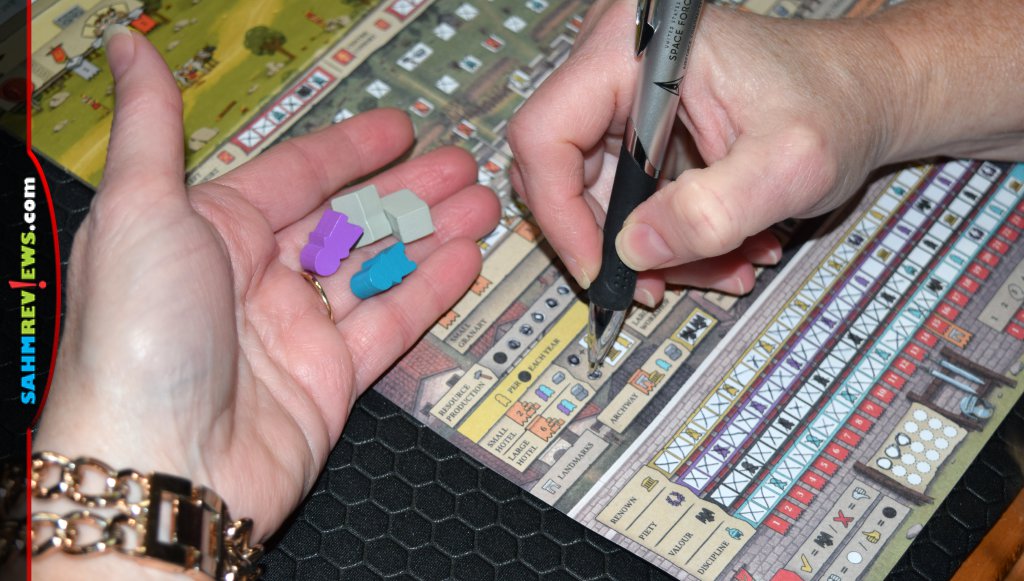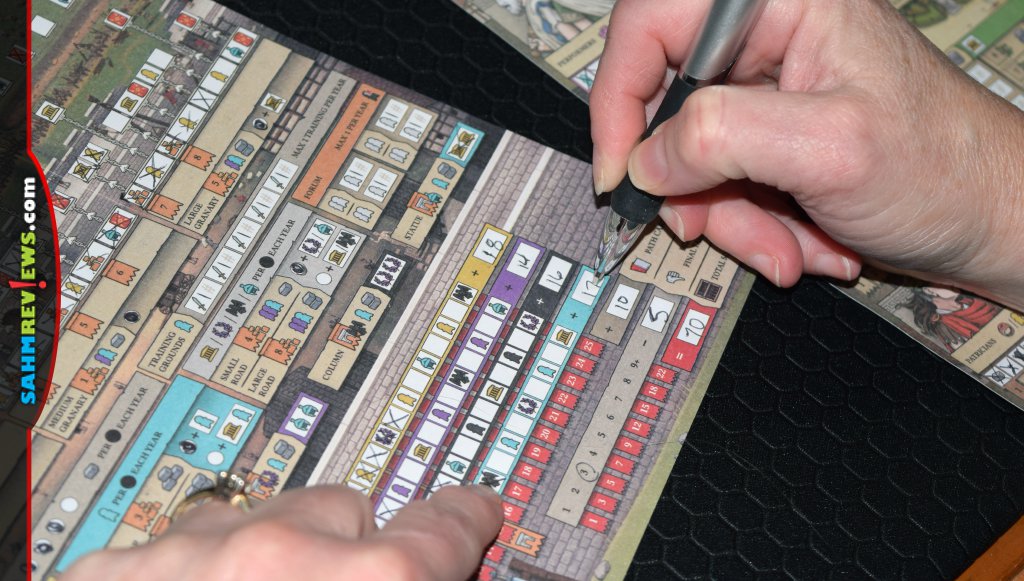Hadrian’s City-Building Strategy Game Overview

I’m always fascinated by the trends that emerge in the board game industry. Every year or two, we see an assortment of titles that follow either a similar theme or mechanic. Usually one really popular title can cause designers to implement a topic, resurrect an old idea or encourage publishers to take a chance on something they previously shied away from. We’ve seen it with polyomino games (Ubongo, Team 3, Cottage Garden), nature-themed (Herbaceous, Wingspan), and mystery and escape games (EXIT, Chronicles of Crime) to name just a few. We even saw a lot that fell into the “and write” games genre. If you aren’t sure what that means, think of Yahtzee. You roll the dice then write down your answer. A lot have been roll and write games like Yahtzee and Qwixx while others use cards instead of dice and are referred to as flip and write like Second Chance. We recently played Hadrian’s Wall, a flip and write game from Renegade Game Studios, and I have to say that it’s a much deeper take on this type of game than I expected. Let’s go over it so you understand what I mean.

First, let’s talk about the setup. The game plays up to six people, but it can also be played solo. To be honest, there really isn’t much player interaction so it’s kind of a solo game no matter how many people are gathered around the table. There are two different tablets and each player gets one sheet from each along with a pen or pencil. Everyone gets a 2-piece player board and their own identical deck of player cards. Decks, including the Fate deck are all shuffled individually. The Fate deck and all the components are placed in piles in the center of the table. While you can try to keep the components neatly organized, don’t let it stress you out when things get all mixed together. Notice how I didn’t say “IF” they get combined… it’s just a matter of when. You’ll understand why as I describe the game in more detail.

The goal of Hadrian’s Wall is to have the most victory points at the end of the game. Shocker, eh? That’s a pretty common objective. But when you look at these game sheets, you may find that it isn’t so obvious how that is accomplished. Worry not, I’m here to tell you. There are only a couple places to score and one place where you lose points. Yup, all this chaos and it boils down to just that. The idea is that you’re protecting your city from raiders while also building up the community itself. Roughly explained, the top portion of the main sheet is where you build your defense and resources and the bottom of it tracks the attributes and progress. The second sheet provides opportunities to enhance the community through trading, theater, religion and diplomacy among other things.
Hadrian’s Wall takes place over six rounds, each referred to as a year. At the beginning of each round, a Fate card is revealed which provides each player with identical sets of starting resources. There are other icons on this same card, but they’ll apply for cards flipped during the round. I’ve noted the different purposes of the various sections and will explain them shortly.

Players also take two cards from the top of their shuffled player deck. One will be added to the top of the player board as one of the few forms of end-game scoring while the other will be used as resources throughout the round. Each player is allowed to select how to play them.

This is one of those games where staff and resources only last the current round. That means you need to find the most efficient and effective ways to spend them. Spend bricks to make your defenses stronger or combine them with personnel to build buildings, roads, marketplaces, temples, landmarks, courthouses and more. If you cover a space with some kind of icon on it, you can mark off the noted spaces or acquire the pictured resource. While this is a flip and write game, it’s honestly just as much an engine builder! As you take actions, you can earn additional actions and it can have a domino effect.

But the hiccup is that you can only work as far as you have progressed on the associated track. For example, you can build a small temple when your priests are level one, but medium and large temples require priests to be at level three and six respectively. You can do additional things such as spend resources to trade in the marketplace or send gladiators into the ring.

Ultimately, you’ll want to focus on ways to increase your attributes (Renown, Piety, Valour and Discipline) as these are the bulk of the victory points will come from. After all players have spent all their resources, the top card (or cards, depending on round) on the Fate deck is revealed to determine whether the enemy is attacking the left, right or center Cohort. If you’ve managed to mark boxes for the associated Cohorts, you are fine. If you haven’t, you’ll mark spaces for Disdain, potentially losing points at the end of the game.
After six rounds, players tabulate their scores and the winner is determined. There’s a lot happening throughout the game, but as I said before, there isn’t much player interaction. You really don’t know who is faring the best until those final numbers! And if you’re one of those people who likes to really dive deep into learning a game, play it solo then lead the charge to introduce it to your friends. Copies of Hadrian’s Wall are available direct from Renegade Games’ website or on Amazon. If your local game store stocks The Search for Planet X, Architects of the West Kingdom and other products from Renegade, chances are they’ll have this one too. Just ask! Renegade Game Studios consistently offers quality, award-winning games so be sure to follow them on Facebook and Twitter to find out what is coming next!
Do you get overwhelmed by games with this much going on?




